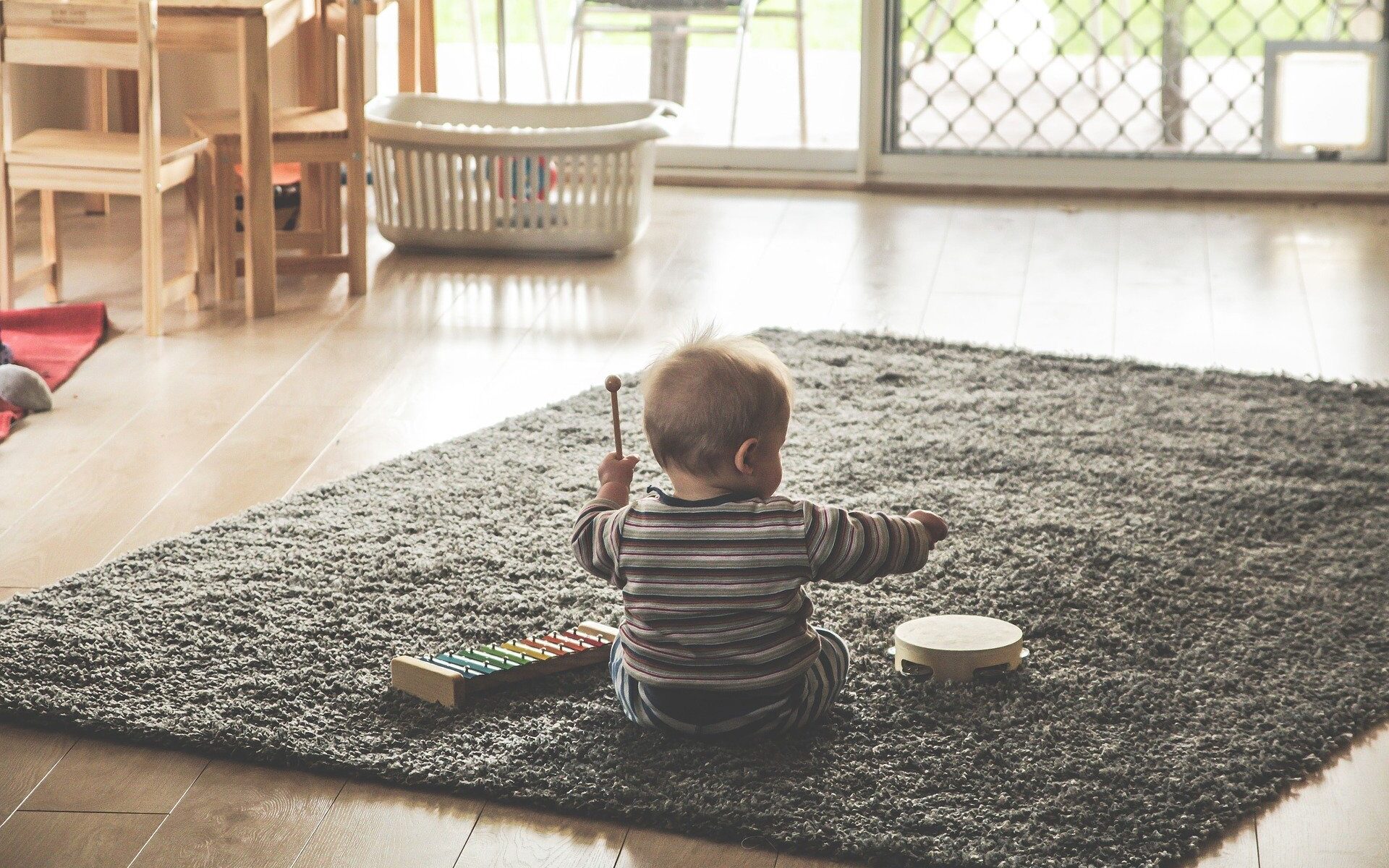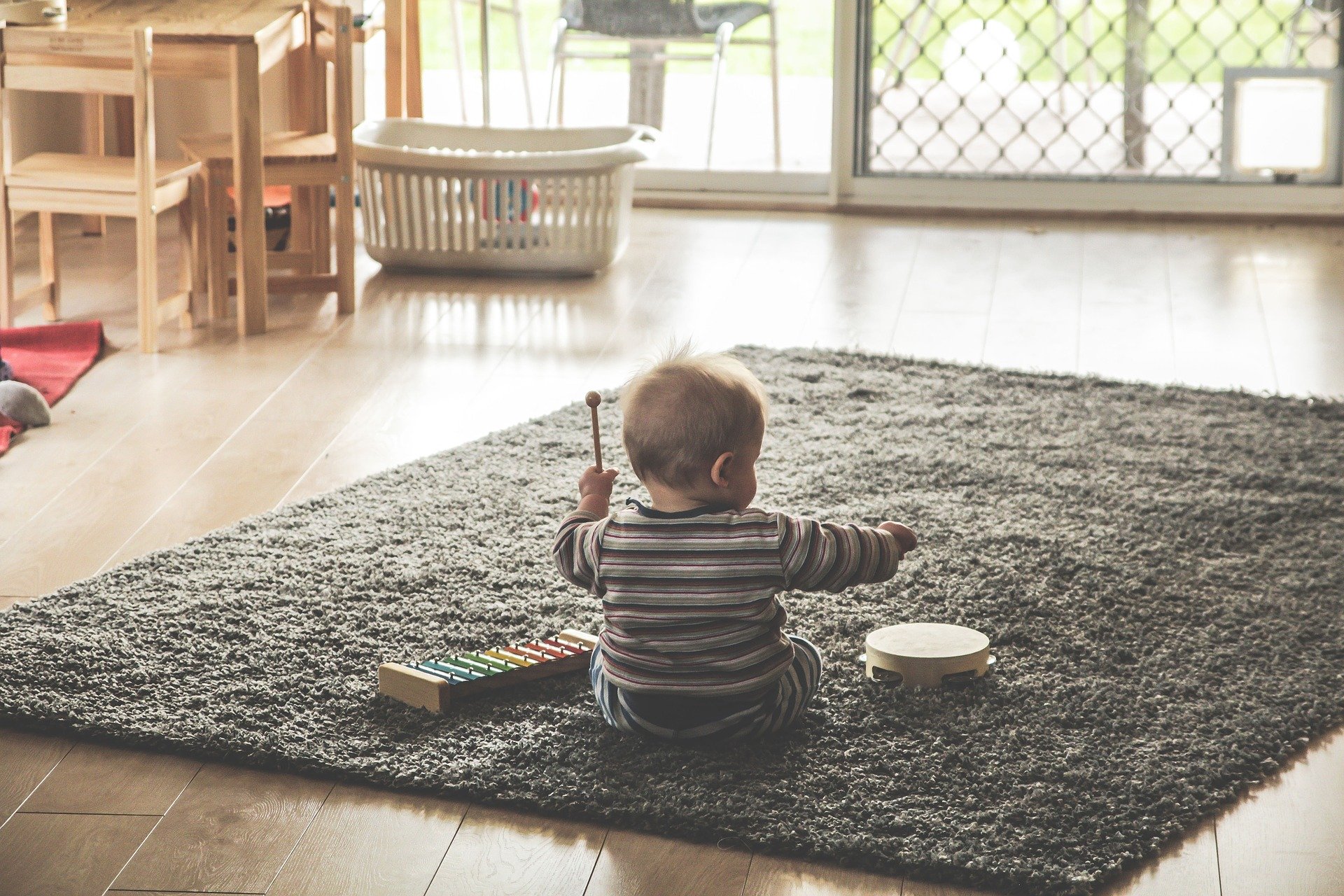
Baby proofing is an essential part of parenthood, but it’s also something that leaves many parents worrying. Making sure that each room of your home is safe for your new baby can feel like a monumental task when you consider the curiosity and activity level of a young child.
If you’re a first time parent, you might also wonder if you can keep your current, grown-up interior design theme without jeopardizing safety. Luckily, baby proofing your home and maintaining a beloved design really only takes a little creativity. With some simple changes, basic safety tips, and appropriate supplies, you’ll quickly feel comfortable letting your newly crawling baby explore his or her world.
Preparing to Child Proof Your House
When preparing for the arrival of your child, you might wonder about the best time to start baby proofing. The truth is that, until your baby becomes mobile, the answer is really up to you. You can choose to prepare your home for your new arrival while you’re still expecting, or you can wait until your child is rolling over or close to crawling.
Every baby is different, but infants typically learn to crawl between 6 and 10 months of age. Of course, a major advantage of baby proofing before your baby’s arrival is that you’ll already have the house ready to go by the time your baby is active. This means a lot less pressure during those exhausted early months of parenthood. However, waiting until you meet your child means that you get to see your child’s personality and behavior before childproofing. You’ll be able to see the pieces of your home that fascinate your child the most and plan accordingly.
Whatever time you decide is best to childproof your home, the first thing you should try is to see your house from your new baby’s point of view. Some child development experts even recommend crawling a bit yourself, taking care to notice safety hazards from your child’s level.
General Baby Proofing: Where to Start
It’s recommended that you install outlet covers throughout your entire home. Simple outlet covers are extremely inexpensive. You should also have a guard for your fireplace and a baby gate at the top of your stairs, preferably one that is held securely in place by the wall.
Make sure that the gate doesn’t have a threshold at its bottom that could cause dangerous tripping. A gate at the bottom of the stairs, too, will give you additional peace of mind and keep you from having to constantly pull your child away from the staircase. As your baby nears age 1, climbing up the stairs might become a favorite pastime, but be certain to always climb with your child and provide close supervision.
What About Your Design?
It’s true that a baby changes everything, but you really only have to make a few basic changes to your home decor for your little one. If you have heavy items that could be pulled down by your baby, be sure to relocate those to a safer part of your house. A young child will try to pull down everything. Candles, decorative knick knacks, glass objects, and even unexpected items, like DVD players, should all be secured and away from your child’s reach.
Make sure that your television or shelves can’t fall over onto your exploring child. If you have sharp corners on your furniture, you might want to cover those with protective corner guards. Your child will eventually want to cruise from furniture piece to furniture piece.
Practice Basic Safety
While child proofing your home, be sure to check the batteries in your smoke detector. You should also make sure that you have a carbon monoxide detector and a fire extinguisher. While you’ll be able to (and should) install cabinet locks for dangerous products, try to also have those products in cabinets that are far away from your baby’s reach.
A medicine box with a lock can be incredibly helpful. Go ahead and get in the habit of putting pills and medicines in the box instead of on a coffee table or somewhere that your child will be able to reach. Even disinfectant wipes and lotions can be dangerous to a small child. Use your time baby proofing as organization time, too — find safe places in your home for potentially dangerous items.
Baby Proofing the Living Areas
Family living areas provide nice, large spaces for a baby to practice crawling. Use your basic safety tips and check for things that can topple over or be pulled down by a curious child. Window treatments are a major consideration when child proofing. If you have a window treatment that includes a cord, like blinds, be sure to tie it up and away from your child’s reach. You can also buy a pack of inexpensive cord winders.
Plantation shutters are an extremely safe window treatment. They have no dangling cords that could be dangerous for children and pets. Many parents choose to update their existing window treatments with plantation shutters for peace of mind.
Baby Proofing the Kitchen
There are many supplies, including knob covers and locks, available on the market to help your kitchen be a safe place for your child. You’ll also want to consider the location of knives and cleaning solutions for your child’s safety. Some parents even choose to install a large gate at the entryway of the kitchen to deter children from entering altogether.
Baby Proofing the Bathrooms
Safety experts recommend setting your hot water heater below 120ºF to avoid dangerously overheating the baby’s bath water. You should also move sharp and potentially dangerous objects, like razors, to a part of the bathroom that can’t be easily accessed by your child. Toilet locks are on the market for extra security.
Baby Proofing the Nursery and Other Rooms
The nursery will be your baby’s sanctuary, but baby proofing this important room isn’t much different from childproofing the other spaces of your home. The same holds true for your own bedroom or even a sibling’s bedroom. If you think your child might end up crawling into the space at some point, it’s worth it to do a quick safety check.
In the nursery, make sure that your crib meets current safety standards and doesn’t drop from the sides or have large gaps. While decorative crib bumpers and fluffy stuffed animals are adorable, it’s important to remember that pediatricians recommend that babies sleep alone, on their backs, in a crib with only a snug mattress sheet underneath them. (When your child reaches age 1, it’s generally okay to offer a safe lovey or small stuffed animal for comfort.)
Getting Your Home Ready for Baby
Baby proofing may seem like a daunting task at first, but your home will soon be a safe and exciting place for your baby to grow.
If you’re looking for a safer alternative to blinds and a beautiful way to achieve just the right amount of natural light in your home, contact Shenandoah Shutters today. We’re proud to offer custom made, hardwood plantation shutters that are elegant, functional, and perfect for the family room. Explore our gallery for a closer look.

